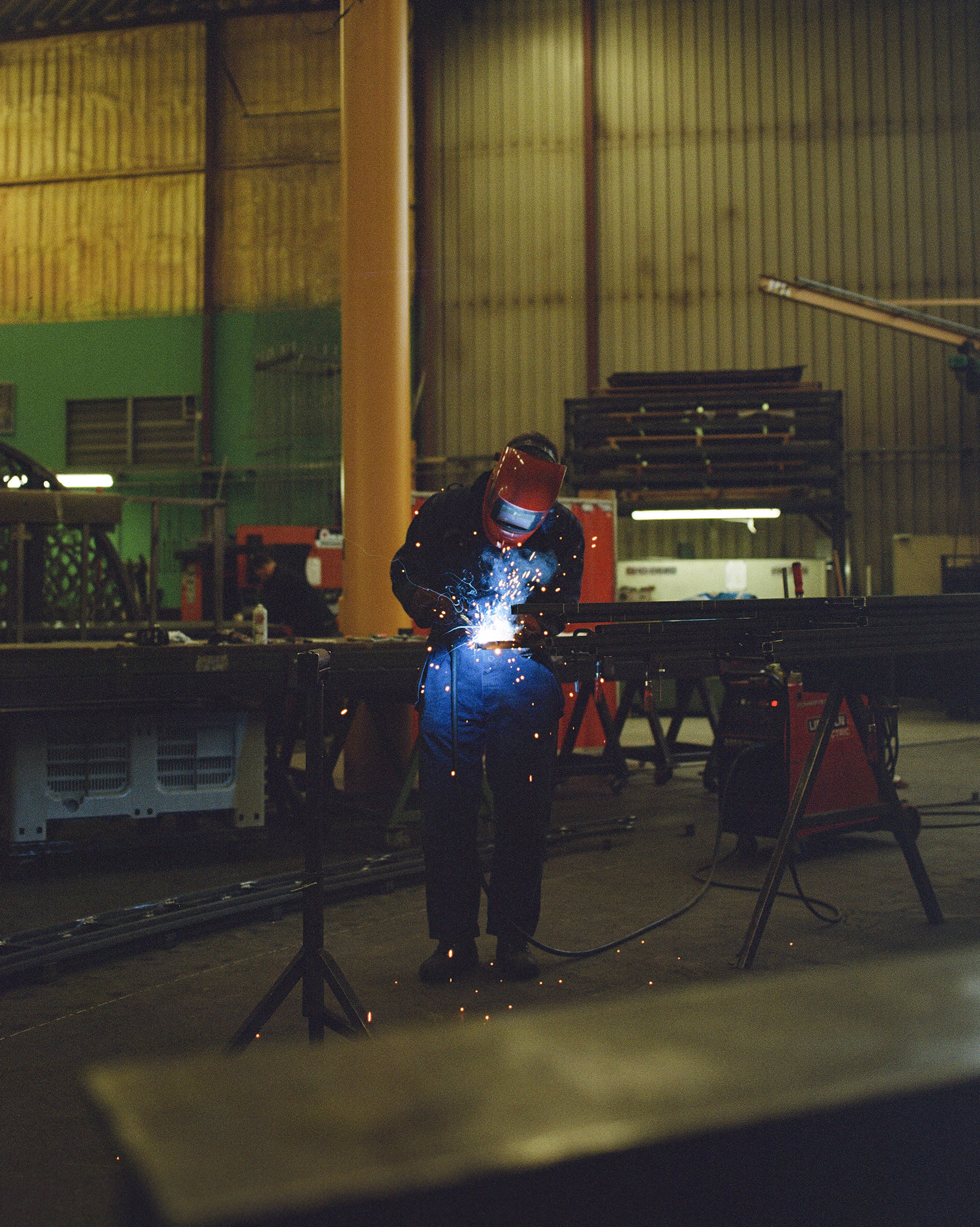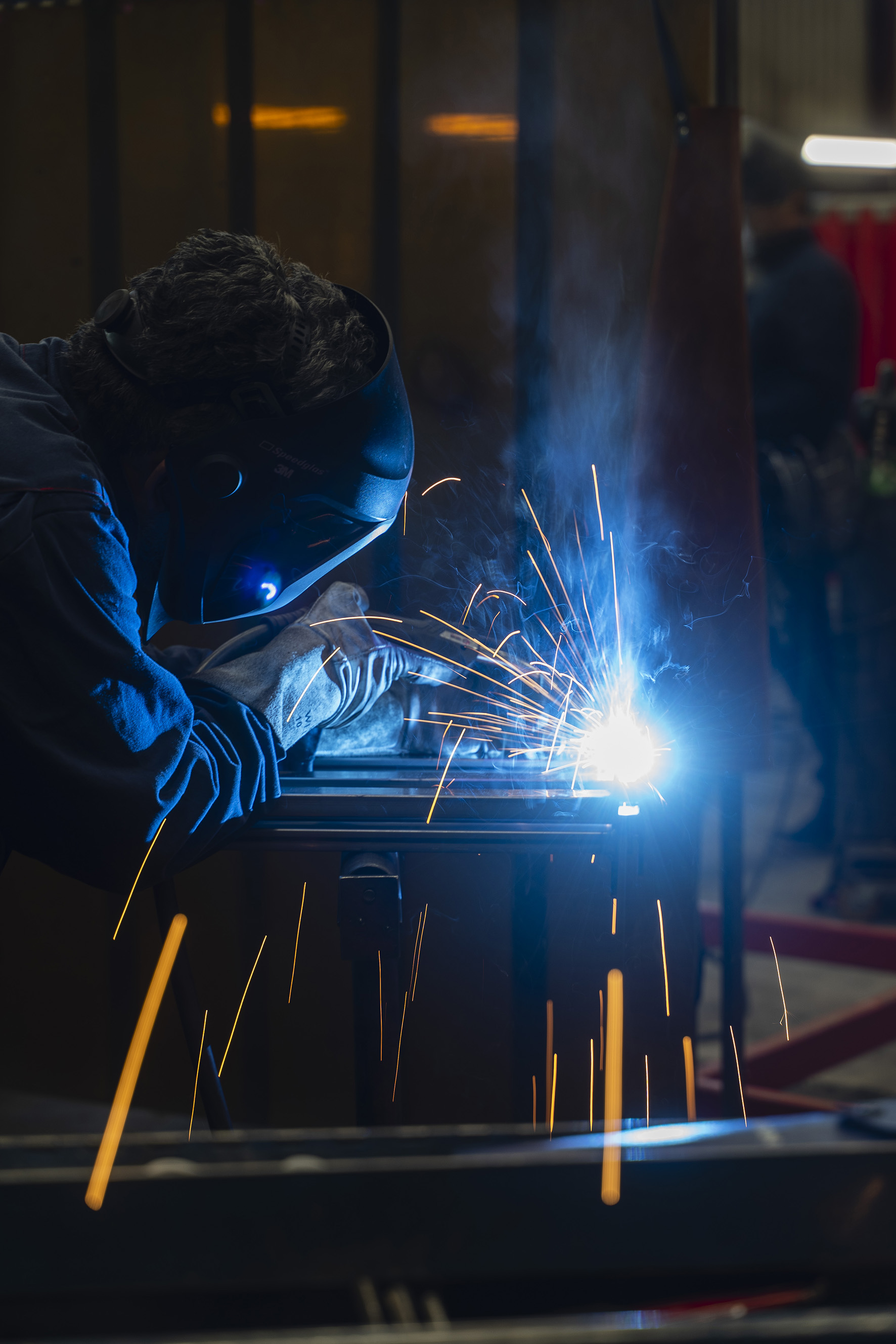
The craft of theatre: Metalworking and construction
Ballet and opera productions are often magical, but they are not just pulled out of a hat. Behind the scenes, each person in each department is working hard and doing their bit to make the magic happen, whether that is lighting, costumes or sets. But who does what? And what does this process involve? Today, we are speaking to Thom de Wildt who is a construction fitter and welder in our scene shop.
Text: Lune Visser
Dressed in dark blue overalls and holding a welding helmet under his arm, Thom tells us it’s actually a coincidence that he’s been working in our scene shop for the past 13 years: “My uncle was a technical manager at Dutch National Opera & Ballet and he suggested I might enjoy working here. I was working with steel at the time, so it wasn’t illogical for me to make the transition to steel for sets. Above all, it sounded like it would be a fun and fantastic challenge. Each set calls for different constructions and this variety is what makes the work so interesting. For example, you might be working with a lot of scaffolding material on one production and then working with something completely different the next time.”
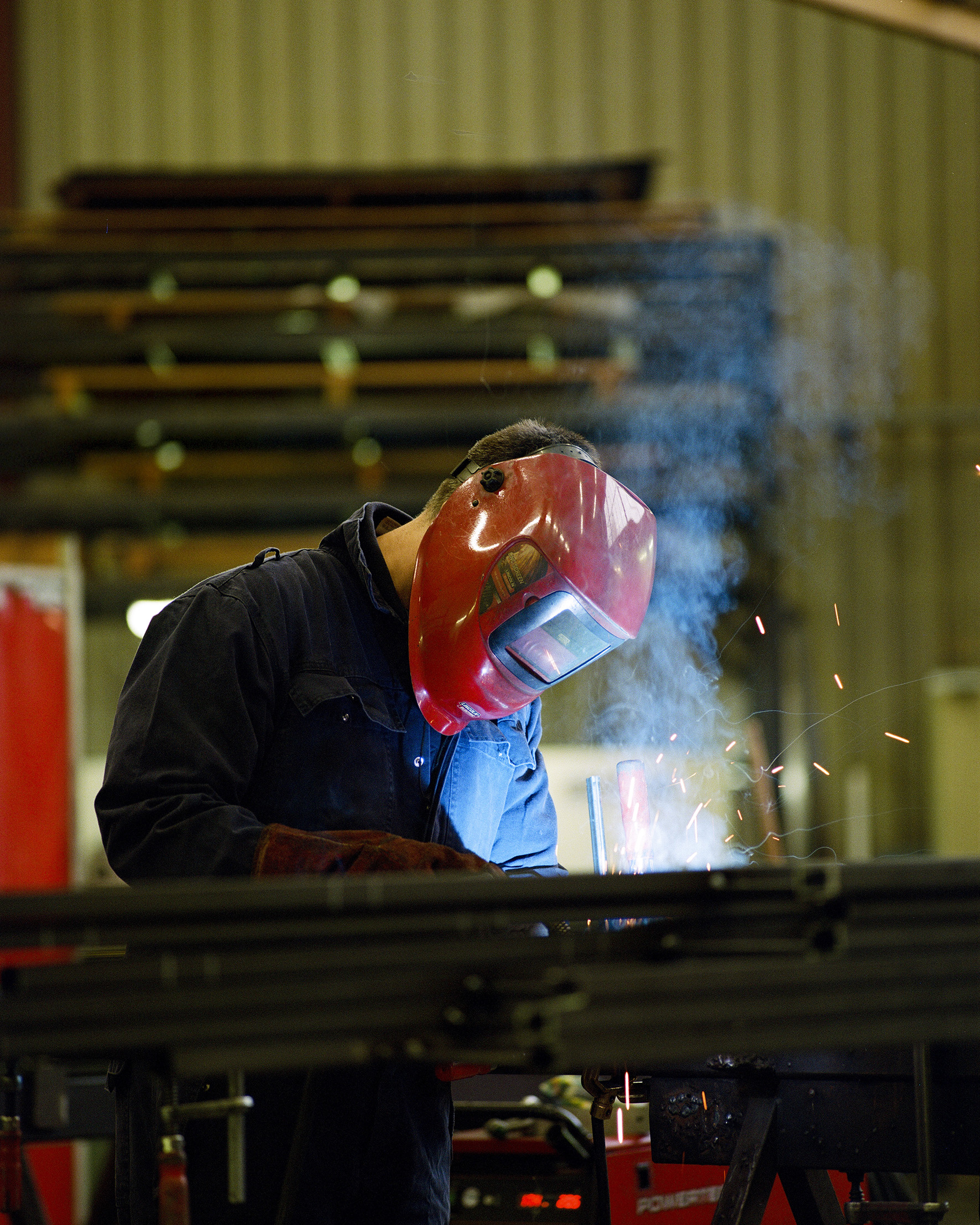
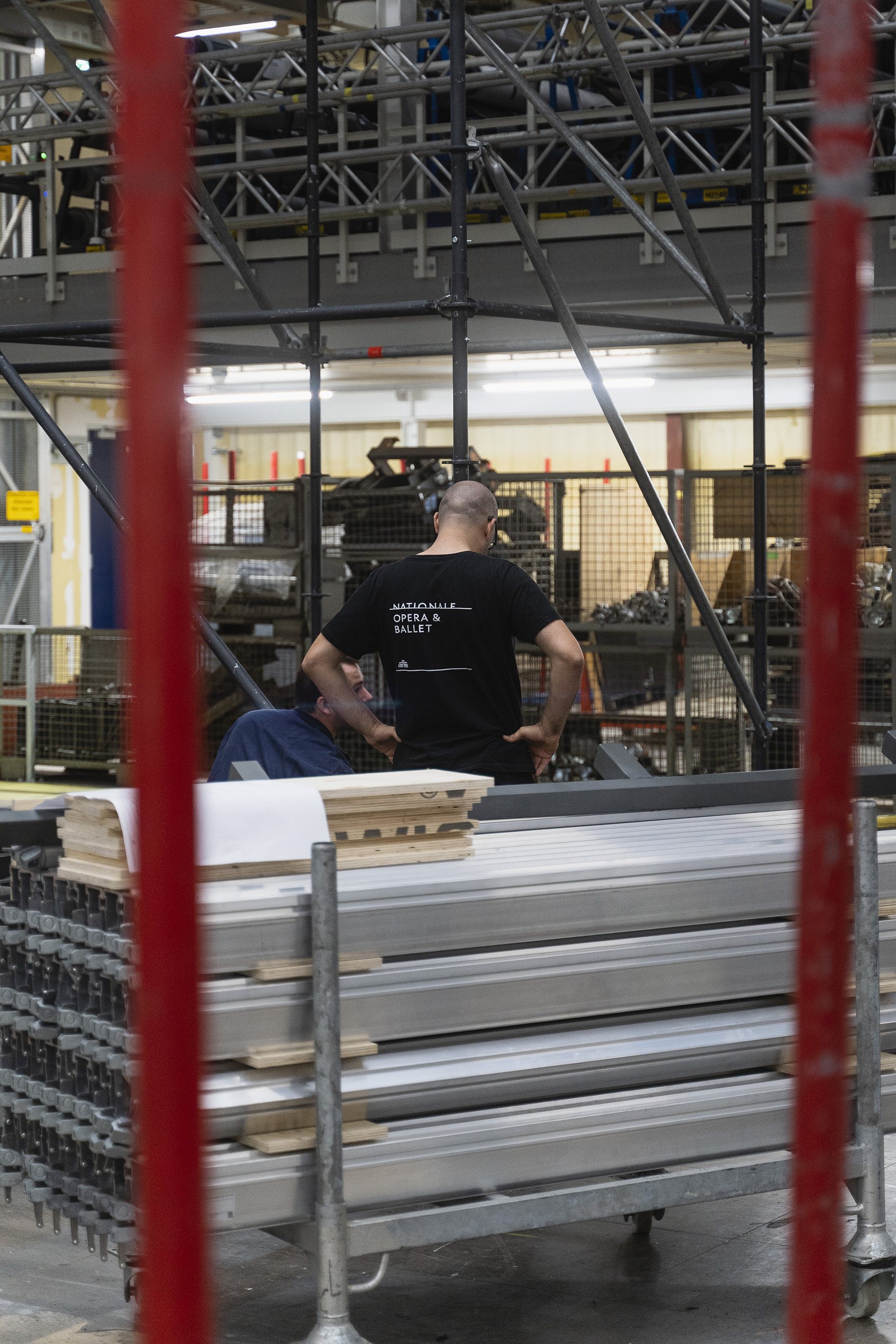
Piecing it all together with iron
But what does the construction process actually involve? “It goes without saying that we don't just start putting something together: we are always given a detailed drawing (from another department), which we have to go over very carefully first. We then start compiling all of the materials we need and start sawing, drilling and welding. In the final stages, we piece everything together before assembling the entire construction.” It may sound like a fun little craft project, but keep in mind we are working with huge frames, scaffolds and structures. There is no room for error – although mistakes are made on occasion unfortunately. For example, something might not fit properly or might not be sturdy enough. In such cases, it is our job to figure out what the issue is and come up with the best possible solution. This can be very tricky: you have to work out what went wrong and then fix it so it does fit.”
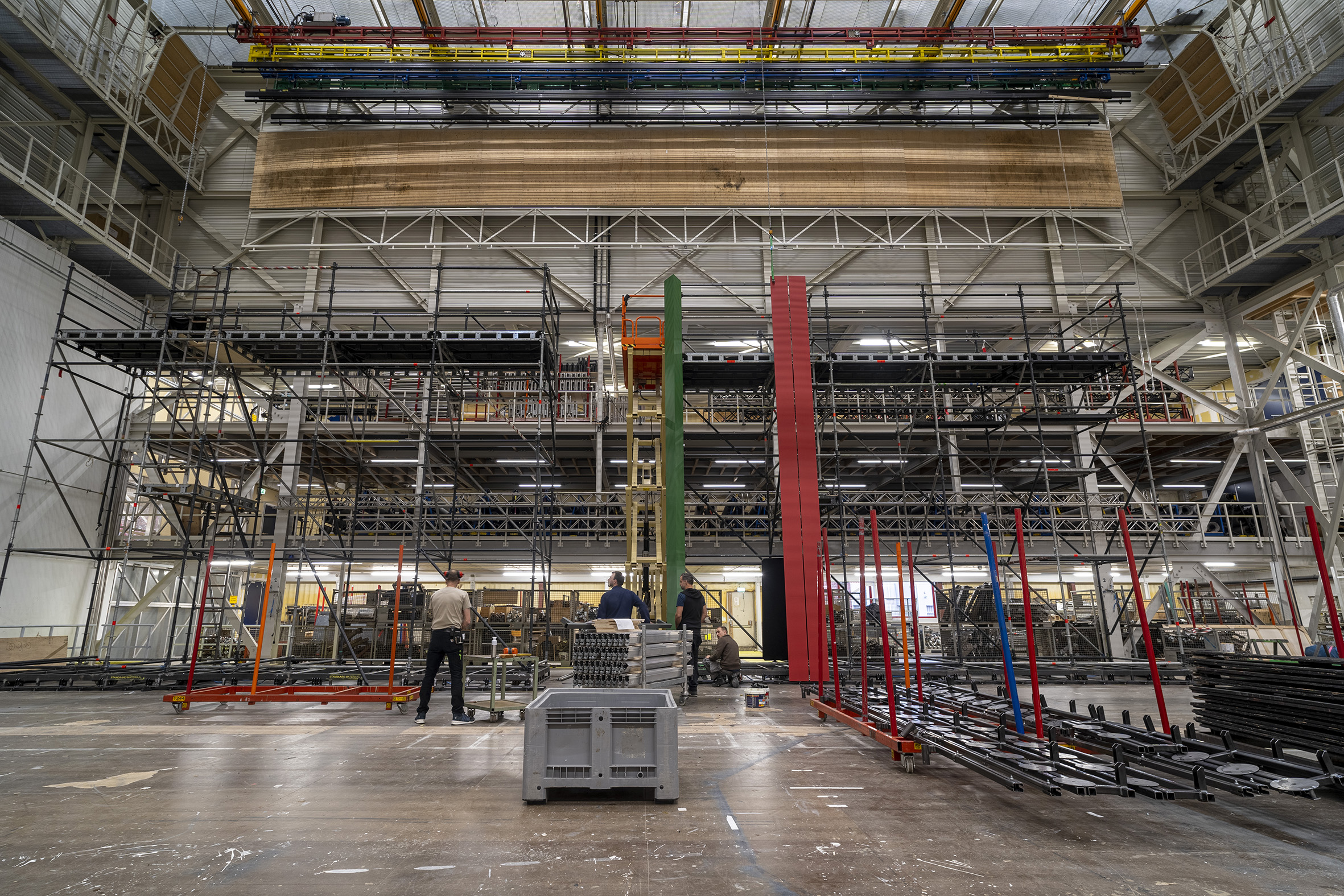
A race against the clock
But even if everything goes off without a hitch in the scene shop, things can still be very stressful once the set arrives in the theatre. “There are almost always last-minute requests for adjustments, no matter what type of production it is. Typical examples are things like an extra door for a new entrance or a new staircase that the performer needs to walk down. Of course, we try to factor these things in as much as possible in the scene shop to avoid running into issues in the theatre. But more often than not, it ends up with one of us still assembling that last piece while we try not to get in everyone’s way. So it’s definitely challenging, but it's such a great feeling when you’ve pulled it all off and got everything done on time and everyone’s happy with the end result. Because ultimately, that’s what it’s all about for us!”
